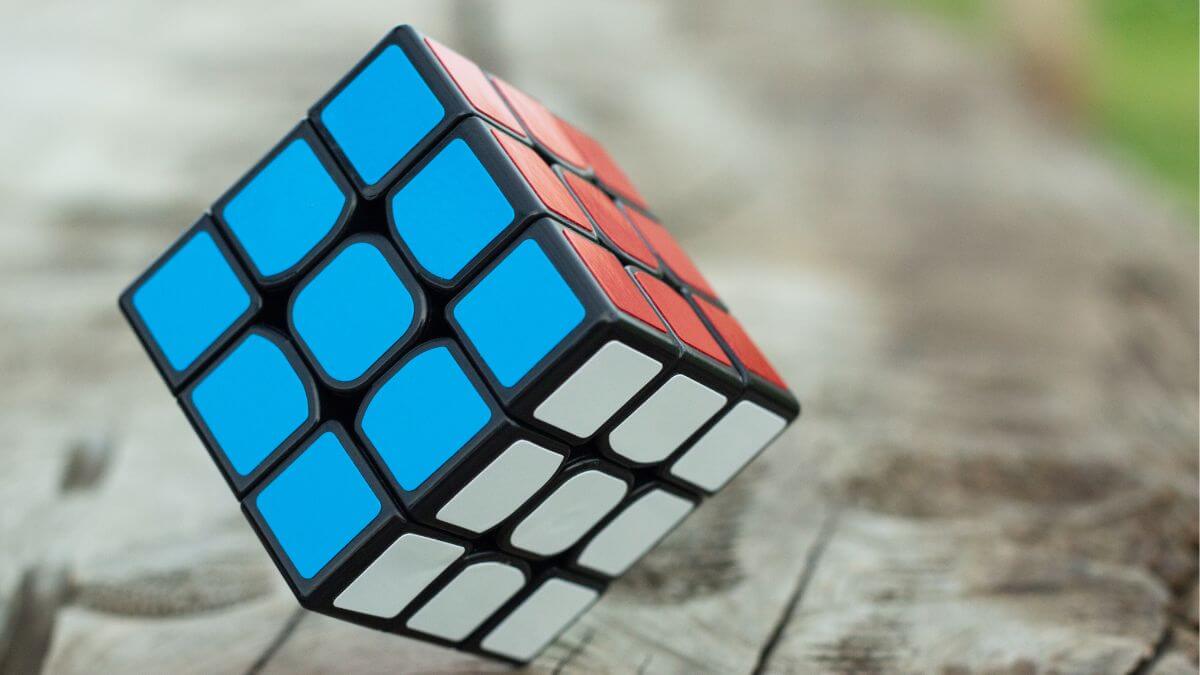The Quick History of the Rubik’s Cube
The Rubik’s cube is a three-dimensional combination puzzle devised in 1974 by Hungarian sculptor and architecture professor Ern Rubik.
The puzzle has six sides, each of which is made up of nine smaller squares of different colours. The puzzle’s purpose is to twist and spin the cube so that each side only has one colour.
The Rubik’s cube has become one of the world’s most popular and recognised toys since its inception, with millions sold globally and a cult following among puzzle fans.
The Inception of the Rubik’s Cube
Ernő Rubik designed the cube to assist his architecture students in grasping three-dimensional objects. The initial cube had the same colours on each side, but Rubik quickly recognised that he could construct a puzzle by randomly rearranging the smaller squares. He registered for a patent in Hungary in 1975, and the puzzle was first shown to the public in 1979 at the International Toy Fair in Nuremberg, Germany.

The Rise to Fame
The Rubik’s cube rapidly became a worldwide hit, selling millions and captivating people’s imaginations all over the world. Competitions were held, and world records for the quickest solution time were established. The Rubik’s cube was named the best-selling toy in history by the Guinness Book of World Records in 1982. The problem also spawned a slew of clones and modifications, and it has appeared in a slew of films, television series, and video games.

Around the same time, competitive cubing started gaining momentum. The World Cube Association was established in 2004, leading to the organization of international speedcubing championships and the recognition of numerous world records. Today, speedcubing stands as a thriving subculture within the broader Rubik’s Cube community.
The Cultural Impact
The Rubik’s cube is still one of the world’s most popular toys, with legions of fans and collectors. New varieties and spin-offs are always being developed, and the puzzle remains a staple of pop culture and a symbol of human invention’s creative potential. The Rubik’s cube continues to excite new generations of puzzle fans and to test the brains of everyone who try to solve its numerous riddles.
The Rubik’s cube is a modern-day cultural symbol, a monument to human ingenuity and the continuing appeal of puzzles and problem-solving. Its legacy lives on, inspiring new generations and challenging the imaginations of those who come into contact with it.
Variations and Innovations
The enduring popularity of Rubik’s Cube has paved the way for a myriad of variations and innovations. Puzzle enthusiasts have discovered countless adaptations, each presenting its own unique challenges.
Pyraminx, Megaminx, and the Mirror Cube are just a few of the Rubik’s Cube-inspired variations that have captured the attention of puzzle enthusiasts worldwide. Additionally, advancements in puzzle design have led to the development of larger cubes, such as the 4×4 and 5×5 versions, testing the limits of solvers’ problem-solving skills.
Moreover, Rubik’s Cube has successfully transitioned into the digital realm. Virtual Rubik’s Cubes allow enthusiasts to solve puzzles on their mobile devices or computers, while online communities foster sharing of solving techniques and create spaces for discussions and competitions.
Contemporary Relevance: Cube in the Digital Age
Rubik’s Cube continues to maintain relevance in the digital age with the advent of mobile apps and simulation games. These digital alternatives provide a convenient way for individuals to engage with the puzzle at their own pace. Furthermore, online tutorials and communities offer valuable resources for beginners and seasoned solvers alike, fostering a vibrant and supportive community.
Closing Thoughts
Rubik’s Cube’s intriguing history and lasting influence highlight its unique place within our culture. From Ernő Rubik’s initial creation to the global phenomenon it is today, Rubik’s Cube continues to capture our curiosity and challenge our intellect.
Whether you are a seasoned solver, a beginner starting your cubing journey, or simply intrigued by its global impact, the Rubik’s Cube offers a colorful puzzle experience that transcends boundaries and invites us to explore the depths of our problem-solving abilities.

